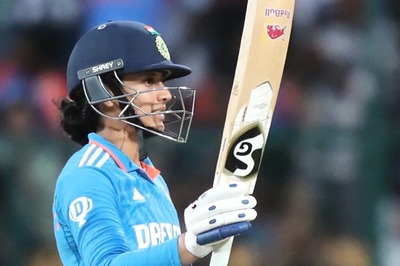
views
New Delhi: The Bharatiya Janata Party has been the biggest beneficiary of the Mandal-Mandir disruption in Indian politics. In one fell swoop, it weaned away the upper castes from the Congress and mobilsed non-Yadav intermediary castes in the Hindi belt and elsewhere.
It devised an ingenious formula to keep the Hindu flock together. For a very long time, the state leadership was awarded to a leader from the intermediary communities. The central leadership remained with the upper caste.
Say for every Atal Bihari Vajpayee, there was a Kalyan Singh in UP. For a Yeddyurappa in Karnataka, there was an Ananth Kumar in Delhi. For Gopinath Munde in Mumbai, there was Pramod Mahajan in Delhi.
At one point in time, BJP’s parliamentary board, its highest decision making body, was dominated by leaders from one particular community - the Brahmins.
The benefits thus reaped have been bountiful. From two seats in the Lok Sabha, the party has been catapulted to a full majority government in a span of three decades. The larger Hindu umbrella could subsume just about anything.
It has taken Congress almost the same number of years to make adjustments and come to terms with altered political dynamics in the country. It finally seems to have learnt the lesson.
In the Hindi-heartland, Rajasthan has been the only state where the grand old party has experimented with backward leadership. Ashok Gehlot has been successful in returning party to power thrice over.
After Rajasthan, Chhattisgarh was probably the second state where Congress realized the import of backward votes and the capacity in the intermediary castes in tilting electoral fortunes. But for untimely death of its top leaders, including Nand Kumar Patel in the Naxal attack ahead of 2013 assembly polls, its Chhattisgarh project would have borne results much earlier.
In the three Hindi heartland states that have gone to the polls, Congress has relied heavily on the backward communities and leadership to recast itself.
Kisaan or farmer is the larger leitmotif to mobilize multiple castes. Most of them are landowners, and continue to till their land even as the upper and lower communities migrate to urban centers.
In Chhattisgarh, BJP has won three elections riding on backward votes- the kurmis, the sahus together constitute 36% of the total population of the state. Congress made Tamardhwaj Sahu the national president of the OBC cell. He, along with state Congress president Bhupesh Baghel, was projected as CM face of the party.
The caste fault-line in the state runs through the deep divisions between the satnami dalits and OBCs. Jogi’s presence in Congress helped BJP polarize backward communities in its favour. BJP won more than 90% of the SC seats due to anti-satnami polarisation of other castes in these constituencies.
In MP, quite unlike in Chhattisgarh, Shivraj Singh Chauhan’s OBC credentials helped BJP to register an impressive vote percentage despite twin anti-incumbency of the state and the Centre. Unemployment, demonetisation, farmer’s unrest and GST recoiled to cast a wide net as polling day approached. Disaffection against the Centre only compounded the troubles for Chouhan.
In MP perhaps, the decider was Congress’ ability to wean away a section of BJP upper caste vote. Congress promised much to the intermediary castes - from loan waiver to improved procurement of crops. But the party lacked a credible backward face in its array of top leadership.
Fielding former PCC President Arun Yadav (whose father Subhash Yadav was deputy CM in Digvijaya Singh government) was only an afterthought to paper over a glaring strategic mistake.
Similarly in Rajasthan too, Congress did not declare a CM candidate. It lined up an array of leadership from the intermediary castes. Rameshwar Dudi is a Jat. Sachin Pilot could mobilize Gujjars. Ashok Gehlot has a larger acceptability among other backward communities.
Jats for instance have been core Congress voters. The remarkable electoral success of the BJP in 2003 and 2013 has been attributed to party’s ability to mobiles Jats who were said to be unhappy with Gehlot.
This round of state elections again demonstrates numerical ability of backward castes to sway electoral outcome one way or the other. Elections are a social-economic churning where communities mobiles around parties to seek a share or a chunk in the political power structure.
That’s precisely what has happened this time around also.
With a brute majority at the Centre, BJP leadership could assert and impose a person of their choice in many states. That may not happen anymore. The party may have to reach out to intermediary castes like Patels in Gujarat and Kurmis in MP and Chhattisgarh.




















Comments
0 comment